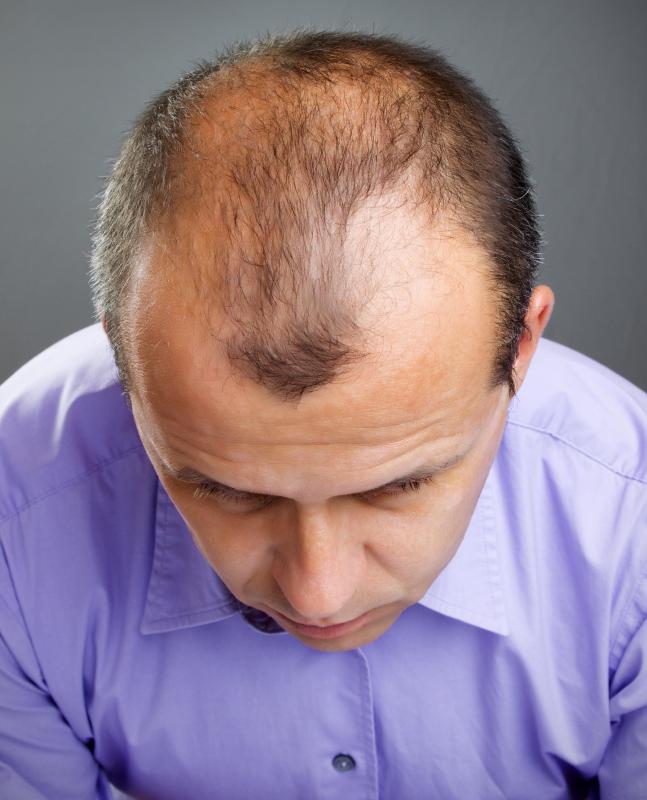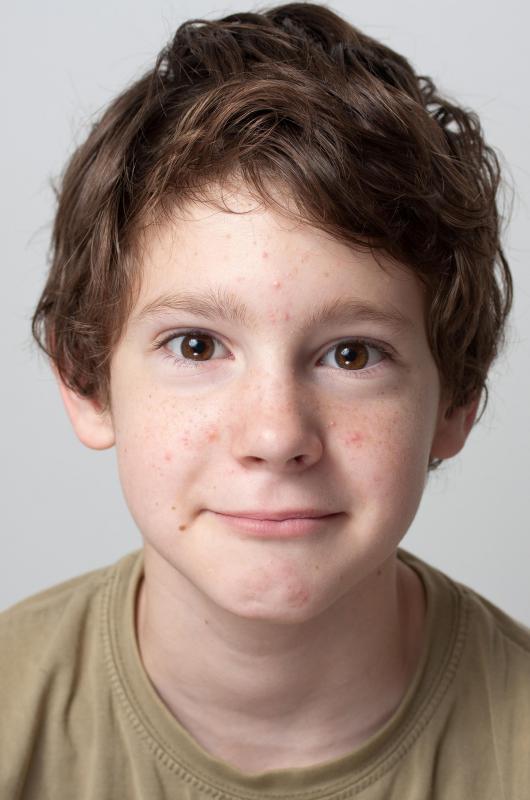At TheHealthBoard, we're committed to delivering accurate, trustworthy information. Our expert-authored content is rigorously fact-checked and sourced from credible authorities. Discover how we uphold the highest standards in providing you with reliable knowledge.
What Is Terminal Hair?
Terminal hair is hair that develops during puberty in both boys and girls. The hair develops out of vellus hair, thin hair that covers most of a child's body. During puberty, vellus hair surrounding the genitals and under the arms is replaced by thicker terminal hair. As this hair develops through the release of androgen hormones, males will develop more of it across their bodies. Unlike scalp hair, terminal hair is regularly replaced through the growth of new follicles.
During childhood, most of a child's body becomes covered with vellus hair. Barely noticeable, these hairs are short and translucent. Vellus hair has no subcutaneous glands, meaning that young children rarely experience skin conditions such as acne. In young boys, the vellus hair on their faces is colloquially known as "peach fuzz." During puberty, vellus hair undergoes a transformation.

During puberty, the bodies of boys and girls release androgen hormones into the bloodstream. In boys, this hormones is testosterone. For girls, the body converts androgen hormones into estrogen. Androgen hormones have a direct effect on vellus hair in certain areas of the body. Each hair develops subcutaneous glands; the glands allow for the secretion of oil to lubricate the hair. The hair darkens, grows longer, and becomes much thicker. The distribution of this hair across the body depends on one's sex.

In males and females, this hair grows both under the arms and around the genitals. Since androgen hormones are present in much higher levels in males, terminal hair also develops in many other areas: the chest, abdomen, back, feet, arms and inner thighs. After puberty, females retain much of their vellus hair, though hormonal imbalances such as those that occur during pregnancy may cause the temporary growth of terminal hair on certain parts of the body. After hormone levels return to normal, vellus hair generally redevelops.

Despite resemblance to scalp hair, the body regularly sheds this hair and replaces it with new follicles. The average lifespan for one of these hairs is three to six months, the latter applying mainly to underarm and genital hair. This feature is the reason why, for instance, the hair under an adult male's arms never appears to grow past a certain length. The hairs shed at different times, guaranteeing that the hairs' purpose, to help insulate the body and more efficiently dissipate heat, is never compromised. Even if a male experiences male pattern baldness in early or middle adulthood, his terminal hair will remain in place even into late adulthood.
AS FEATURED ON:
AS FEATURED ON:















Discussion Comments
I'm blessed that the terminal hair on my arms is not very heavy. It's there, but it's very light. I wonder if the whole vellus/terminal hair thing explains why so many brunettes (like me) have pseudo mustaches?
I have to shave every so often to keep the shadow from showing up on my upper lip. It's kind of embarrassing. I know people who use hair removal cream and wax, but I just shave it. It doesn't make it any thicker, contrary to popular belief, and it's a lot cheaper. Also, I think I’m sensitive to the hair removal cream. Makes my skin burn a little.
My hair is so fine and thin, I honestly chuckled when I saw this article and said, "Well, that describes my hair!" Actually, it really describes my husband's hair, which grows out, not down.
It's an interesting topic though, and now I know why hair on my legs and under my arms never gets past a certain length. I just wish terminal hair didn't grow so much faster than the hair on my head. It would save me a lot of effort! I wouldn’t have to shave my legs and under my arms nearly as often, which I could definitely deal with.
Post your comments